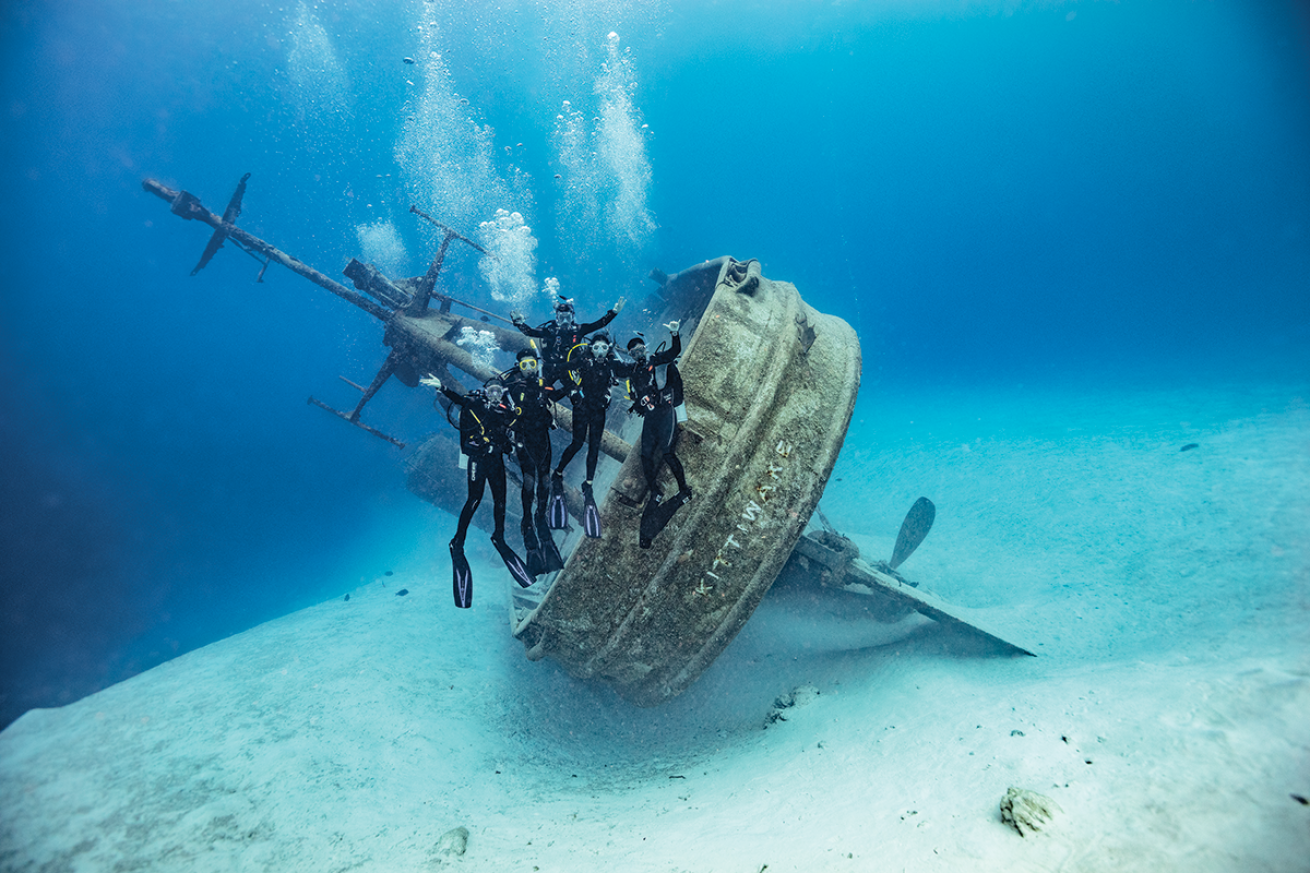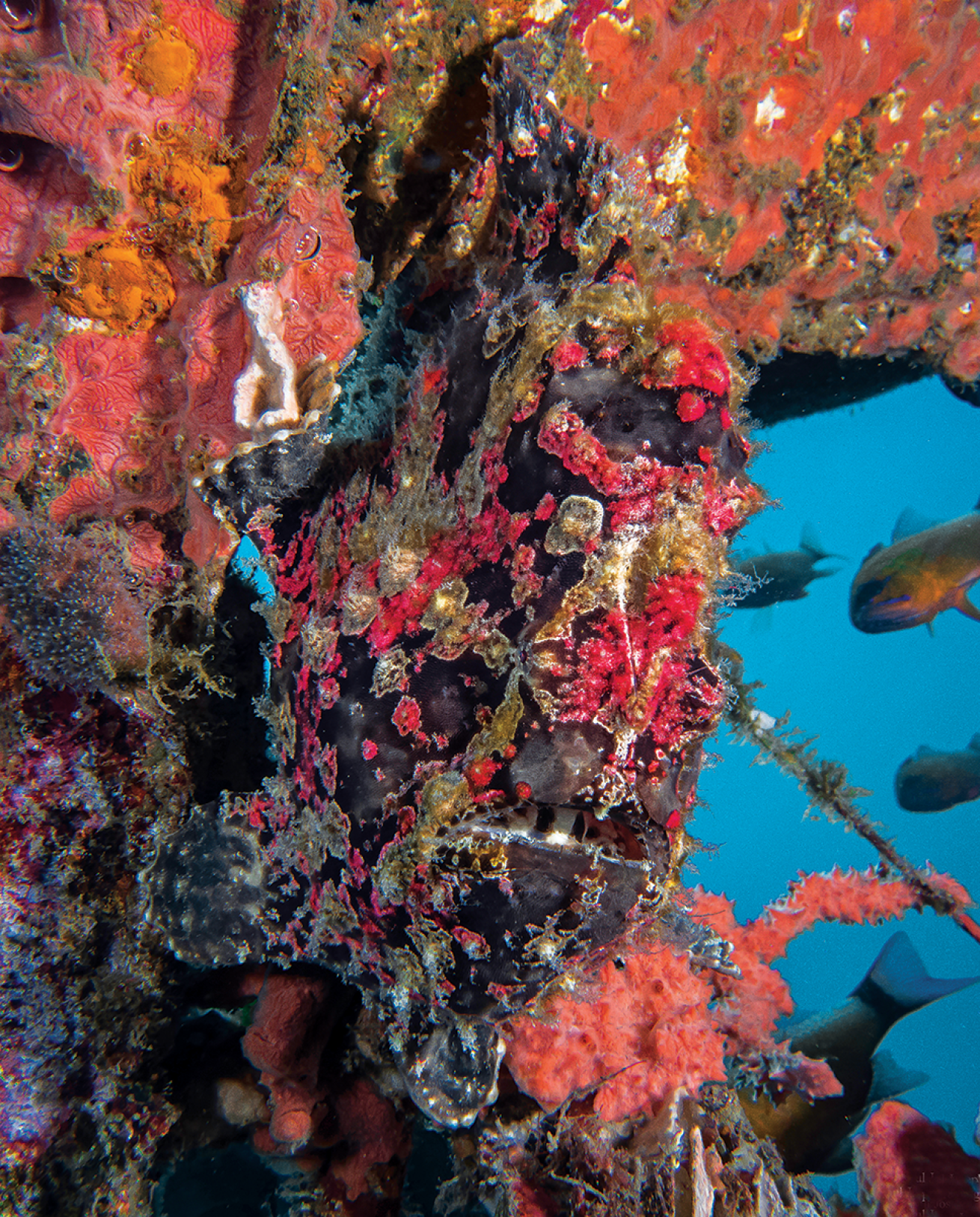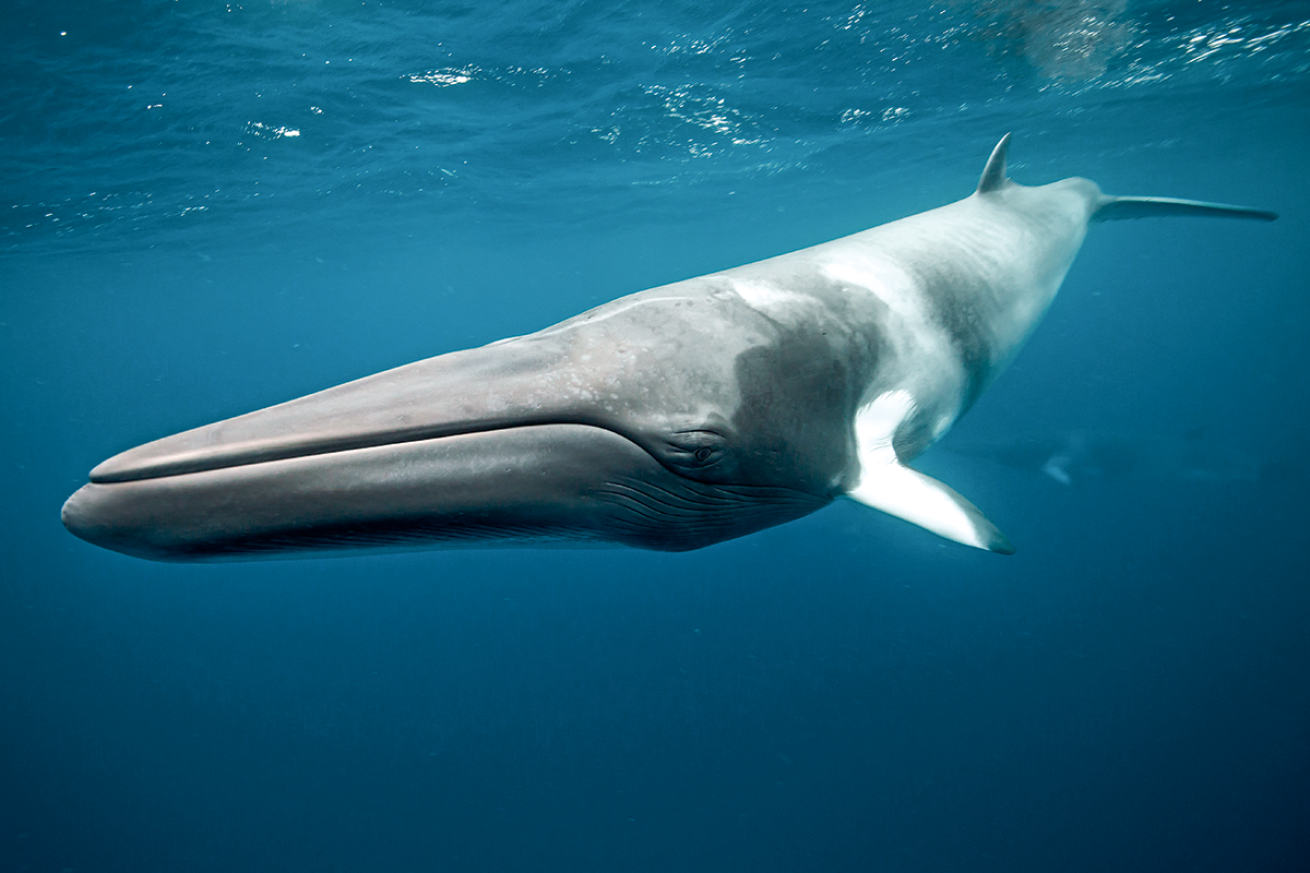Dive Hotspots You Should Have on Your Radar

PADIThe USS Kittiwake, purpose-sunk off Grand Cayman in 2011.
Planning a trip to one of these dive hotspots? Here’s what you need to know. Featuring insight from locals, tips for timing seasonal experiences, and the scoop on favorite dive sites, as well as some lesser-known sites you’ll want on your radar too.
Cayman Islands
Under the Radar
Slow down and take time to observe on your dives around Cayman, says Sergio Coni, of Don Foster’s Dive Cayman. You might be surprised by all the macro wonders the islands hold.
“Cayman dive sites are teeming with life,” Coni says. “Pygmy frogfish, pipehorses and seahorses during the day, and ribbonfish, larval tripod fish, pearlfish and more at night.” He names Turtle Farm Mini Wall, Eden Rock and Casuarina Point Reef (Don Foster’s house reef) among the best dive sites for spotting the smaller stuff.
The Classic Dive
One of the Caribbean’s most famous wreck dives, the 251-foot-long USS Kittiwake sits upright in 60 feet of water right off Grand Cayman’s famous Seven Mile Beach. It often attracts larger marine life like sea turtles, stingrays and barracuda. The World War II-era ship has an interesting history as a submarine rescue vessel and was responsible for finding some of the debris from the Space Shuttle Challenger too, adding to its lore.
Dive Report
“The reefs are absolutely packed with fish, more than before the Covid lockdown. It seems a two-year break really improved the fish life,” says Clive Webb, of Red Sail Sports. “Lately, there have been a couple of very friendly nurse sharks hanging around the West Side sites that come and check out divers.”
Plan a Trip
Tyler Hart, of Sunset Divers, says September and October are prime time to spot the massive schools of silversides that crowd coral canyons around Cayman, but the shimmering shoals can peak at other times throughout the year too. They make for a truly dazzling underwater sight— particularly when predators, such as enormous tarpon, cut through the schools on the hunt.
Second-Time Visitor
Fancy more time in the water on your no-fly day? Don’t miss a shallow snorkel around the wreck of the Pallas in Grand Cayman’s South Sound, says Coni. “It holds tons of life, including morays, nurse sharks and, if you are lucky, eagle rays,” he says. Topside, Cayman Crystal Caves, an alleged erstwhile pirate hideout, has impressive stalactites and stalagmites you can view on guided walking tours.
Philippines
Under the Radar

Paul PrudhommeA frogfish camouflaged among corals in Dauin, Philippines.
Bulusan, in Luzon’s Bicol Region, about an hour from better-known Ticao Island, is “still in the exploratory phase,” but it has already proved promising for stellar diving, says Jessica Noelle Wong, of Ticao Island Dive Camp Resort. “The clarity of the water is amazing and comparable to Tubbataha or the Maldives,” she says.
The Classic Dive
With over 7,000 islands, it’s hard to pinpoint a single classic dive site in the Philippines. But the volcanic Apo Island in Dauin basically “writes its own advert,” says Berlinda Koolen, of Atmosphere Resorts & Spa. “There are coral walls, great drift dives with big schools of jackfish, and one of the most beautiful coral gardens I have encountered while diving.”
Dive Report
Divemaster Arjay Salac, of Atmosphere Resorts & Spa, spent the month of June diving with underwater videographers for an upcoming BBC series. “Normally I only get to see them for short amounts of time while I guide my guests,” Salac says. “But now I had the time to see them ‘fishing,’ feeding, digesting their meal and finding a good hiding spot.”
Plan a Trip
Visit Dauin during what locals call “Octopus October” to see different species at shallow depths, as they tend not to hide in the rubble as much during this time of year. “If you’re lucky, you can see the courtship and mating ritual around the full moon,” says Koolen.
Second-Time Visitor
It’s easy to want to spend all your time underwater in the Philippines, but the country fascinates topside too. For starters, spend some surface time trying canyoneering on the island of Cebu at Kawasan Falls. In Palawan, at the Puerto Princesa Subterranean River National Park, spot bats while floating along a subterranean river that flows to the South China Sea.
Australia
Under the Radar
Keen divers hit Sydney for incredible shore diving not far from the famous Opera House at Circular Quay. “You never know what you’re going to see,” says Michael Gavaghan, of Dive Centre Manly, pointing to the no-take aquatic reserves at Manly’s Main Beach and Shelly Beach. Giant cuttlefish, weedy seadragons, wobbegong and Port Jackson sharks, gloomy octopuses, cownose rays and eagle rays are all regularly seen by divers, he says.

Shutterstock.com/IslandJems Jemma CraigDwarf minke whales migrate to the Great Barrier Reef annually.
The Classic Dive
Wrecked during a cyclone in 1911, the SS Yongala took 122 people with it when it sank in 100 feet of water south of Townsville, off Queensland’s coast. “Now it’s home to an almost unimaginable amount of marine life,” says Craig Stephen of Mike Ball Dive Expeditions, citing Queensland (goliath) grouper, huge marbled bull rays, turtles, eagle rays and schools of barracuda, trevally and jacks. Traveling by liveaboard allows you to dive the wreck at dusk and night in addition to daytime dives.
Dive Report
The dwarf minke whale migration to the warm tropical waters of the Ribbon Reefs in the northern Great Barrier Reef recently delivered spectacular experiences to liveaboard guests, says Stephen. The whales have now headed back toward the Antarctic but will return next June and July.
Plan a Trip
The chance to see impressive coral spawning events draws divers to the Great Barrier Reef from October through December, when it’s important to work closely with your dive operator to time your diving right for catching the event. “This truly remarkable event resembles an underwater snowstorm as the reef explodes with reproductive life,” Stephen says.
Second-Time Visitor
Australia is a place you can visit over and over and always find something new to blow you away, and it’s worth a longer stay if you can swing it. “From snow-covered ski fields to tropical billabongs with crocodiles and cosmopolitan cities, it’s important to research extracurricular activities beyond diving that will float your boat,” Stephen says.










